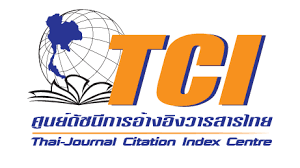Pyrolysis and modification of coconut shell into sulfonated biochar and its catalytic activity on cellobiose conversion
DOI:
https://doi.org/10.55713/jmmm.v35i3.2271Keywords:
coconut shell, pyrolysis, sulfonated biochar, cellulose hydrolysisAbstract
Coconut shell was successfully valorized into sulfonated biochar through carbonization in various temperatures and duration. This work aims to provide suitable solid acid carbonaceous catalyst for cellobiose conversion into valuable product. Sulfonated biochar is characterized to evaluate its crystallinity, sulfonate, and oxygenated functional groups by XRD method and FTIR spectroscopy. The resulting solid acid carbonaceous material was tested toward cellobiose hydrolysis to assess its catalytic activity in various time, temperature, and catalyst weight. FTIR spectra reveals some of the biochar product has sulfonate group as indicated by absorbance band at 1234 cm‒1, 1070 cm‒1 and 1180 cm‒1, which belongs to -SO3H and O=S=O vibration. The most noticeable spectra are found on biochar prepared at 800℃ in 1.5 h to 2 h carbonization. Diffraction pattern shows similar peak that characteristic of biochar at 2θ 23 and 44°. Long duration process and higher temperature of carbonization affects the product to becomes less crystalline and smaller amplitude. Catalytic activity of sulfonated biochar toward cellobiose hydrolysis shows mixed result of total reducing sugar yield. Overall, sulfonated biochar able to hydrolyze cellobiose at optimum condition 12 h and 150℃ resulting in total reducing sugar by 178 ppm.
Downloads
References
U. Pongsa, P. Lumsakul, O. Jamesang, P. Saengkhiao, P. Sangrayub, and W. Pumchan, “Feasibility study of coconut shell biochar production using community-scale biochar kiln,” Journal of Metals, Materials and Minerals, vol. 33, no. 2, pp. 128-138, 2023. DOI: https://doi.org/10.55713/jmmm.v33i2.1699
T. Rattanawongwiboon, P. Chanklinhorm, T. Chutimasakul, T. Kwamman, W. Kingkam, R. Khamlue, and S. Ummartyotin, “Green acidic catalyst from cellulose extracted from sugarcane bagasse through pretreatment by electron beam irradiation and subsequent sulfonation for sugar production,” Journal of Metals, Materials and Minerals, vol. 32, no. 4, pp. 134-142, 2022. DOI: https://doi.org/10.55713/jmmm.v32i4.1540
A. Rachmat, and H. Hasanudin, “Production of biodiesel from esterification of oil recovered from palm oil mill effluent (POME) sludge using tungstated-zirconia composite catalyst,” Indonesian Journal of Fundamental and Applied Chemistry, vol. 1, no. 2, 2016. DOI: https://doi.org/10.24845/ijfac.v1.i2.42
A. Rachmat, R. Dwifahmi, N. Yuliasari, A. Mara, and D. Desnelli, “Preparation of Ga2O3-modified sulfated zirconia mesopore and its application on cellobiose hydrolysis,” Journal of Metals, Materials and Minerals, vol. 33, no. 3, 2023. DOI: https://doi.org/10.55713/jmmm.v33i3.1702
N. A. de Figueredo, L. M. da Costa, L. C. A. Melo, E. A. Siebeneichlerd, and J. Tronto, “Characterization of biochars from different sources and evaluation of release of nutrients and contaminants,” Revista Ciencia Agronomica, vol. 48, no. 3, pp. 395-403, 2017.
X. Yuan, Y. Cao, J. Li, A. K. Patel, C-D. Dong, X. Jin, C. Gu, A. C. K. Yip, D. C. W. Tsang, and Y. S. Ok, “Recent advancements and challenges in emerging applications of biochar-based catalysts,” Biotechnology Advances, vol. 67, no. September 2022, p. 108181, 2023. DOI: https://doi.org/10.1016/j.biotechadv.2023.108181
K. Nakason, P. Sumrannit, S. Youngjan, W. Wanmolee, W. Kraithong, P. Khemthong, V. Kanokkantapong, and B. Panyapinyopol, “Environmental impact of 5-hydroxymethyl-furfural production from cellulosic sugars using biochar-based acid catalyst,” Chemical Engineering Science, vol. 287, 2024. DOI: https://doi.org/10.1016/j.ces.2024.119729
E. Gul, K. A-B. Alrawashdeh, O. Masek, Ø. Skreiberg, A. Corona, M. Zampilli, L. Wang, P. Samaras, Q. Yang, H. Zhou, P. Bartocci, and F. Fantozzi, “Production and use of biochar from lignin and lignin-rich residues (such as digestate and olive stones) for wastewater treatment,” Journal of Analytical and Applied Pyrolysis, vol. 158, no. June, 2021. DOI: https://doi.org/10.1016/j.jaap.2021.105263
H. U. Kim, J. W. Kim, S. Seo, and J. Jae, “Hydrolysis of regenerated cellulose from ionic liquids and deep eutectic solvent over sulfonated carbon catalysts,” RSC Advance, vol. 13, no. 12, pp. 8153-8162, Mar. 2023. DOI: https://doi.org/10.1039/D2RA08224A
S. Li, Z. Gu, B. E. Bjornson, and A. Muthukumarappan, “Biochar based solid acid catalyst hydrolyze biomass,” Journal of Environmental Chemical Engineering, vol. 1, no. 4, 1174-1181, Dec. 2013. DOI: https://doi.org/10.1016/j.jece.2013.09.004
Y. Wei, C. Shen, J. Xie, and Q. Bu, “Study on reaction mechanism of superior bamboo biochar catalyst production by molten alkali carbonates pyrolysis and its application for cellulose hydrolysis,” Science of the Total Environment, vol. 712, Apr. 2020. DOI: https://doi.org/10.1016/j.scitotenv.2019.136435
M. Amer, and A. Elwardany, “Biomass Carbonization,” in Renewable Energy - Resources, Challenges and Applications, IntechOpen, 2020. DOI: https://doi.org/10.5772/intechopen.90480
S. H. Lee, and J. S. Roh, “Changes in functional groups and crystal structure of coal tar pitch with respect to carbonization temperature,” Crystals (Basel), vol. 14, no. 2, 2024. DOI: https://doi.org/10.3390/cryst14020122
C. Li, J-I. Hayashi, Y. Sun, L. Zhang, S. Zhang, S. Wang, and X. Hu, “Impact of heating rates on the evolution of function groups of the biochar from lignin pyrolysis,” Journal of Analytical and Applied Pyrolysis, vol. 155, no. Dec. 2020, p. 105031, 2021. DOI: https://doi.org/10.1016/j.jaap.2021.105031
A. N. Popova, “Crystallographic analysis of graphite by X-ray diffraction,” Coke and Chemistry, vol. 60, no. 9, pp. 361-365, 2017. DOI: https://doi.org/10.3103/S1068364X17090058
K. Yogalakhsmi, P. Devi, P. Sivashanmugam, S. Kavitha, Y. Kannah, S. Varjani, S. Adishkumar, G. Kumar, and B. J. Rajesh, “Lignocellulosic biomass-based pyrolysis: A comprehensive review,” Chemosphere, vol. 286, 2022. DOI: https://doi.org/10.1016/j.chemosphere.2021.131824
S. Huang, Q. Liang, J. Geng, H. Luo, and Q. Wei, “Sulfurized biochar prepared by simplified technic with superior adsorption property towards aqueous Hg(II) and adsorption mechanisms,” Materials Chemistry and Physics, vol. 238, 2019. DOI: https://doi.org/10.1016/j.matchemphys.2019.121919
Z. Zhou, D. Liu, and X. Zhao, “Conversion of lignocellulose to biofuels and chemicals via sugar platform: An updated review on chemistry and mechanisms of acid hydrolysis of lignocellulose,” Renewable and Sustainable Energy Reviews, vol. 146, no. May, p. 111169, 2021. DOI: https://doi.org/10.1016/j.rser.2021.111169
L. Leng, R. Liu, S. Xu, B.A. Mohamed, Z. Yang, Y. Hu, J. Chen, S. Zhao, Z. Wu, H. Peng, H. Li, H. Li, “An overview of sulfur-functional groups in biochar from pyrolysis of biomass,” Journal of Environmental Chemical Engineering, vol. 10, no. 2, p. 107185, 2022. DOI: https://doi.org/10.1016/j.jece.2022.107185
A. Tomczyk, Z. Sokolowska, P. Boguta, “Biochar physico-chemical properties : pyrolysis temperature and feedstock kind effects,” Reviews in Environmental Science Bio/technology, vol. 19, no. 1, pp. 191-215, 2020. DOI: https://doi.org/10.1007/s11157-020-09523-3
M. Tripathi, J. N. Sahu, and P. Ganesan, “Effect of process parameters on production of biochar from biomass waste through pyrolysis: A review,” Renewable and Sustainable Energy Reviews, vol. 55, p. 467-481, 2016. DOI: https://doi.org/10.1016/j.rser.2015.10.122
N. A. de Figueredo, L. M. da Costa, L. C. A. Melo, E. A. Siebeneichlerd, and J. Tronto, “Characterization of biochars from different sources and evaluation of release of nutrients and contaminants,” Revista Ciencia Agronomica, vol. 48, no. 3, pp. 395-403, 2017. DOI: https://doi.org/10.5935/1806-6690.20170046
T. Endo, E.M. Aung, S. Fujii, S. Hosomi, M. Kimizu, K. Ninomiya, and K. Takahashi, “Investigation of accessibility and reactivity of cellulose pretreated by ionic liquid at high olading,” Carbohydrate Polymers, vol. 176, pp. 365-373, 2017. DOI: https://doi.org/10.1016/j.carbpol.2017.08.105
C. M. Altaner, L. H. Thomas, A. N. Fernandes, and M. C. Jarvis, “How cellulose stretches: Synergism between covalent and hydrogen bonding,” Biomacromolecules, vol. 15, no. 3, pp. 791-798, 2014. DOI: https://doi.org/10.1021/bm401616n
H. Tondro, H. Zilouei, K. Zargoosh, and M. Bazarganipour, “Investigation of heterogeneous sulfonated graphene oxide to hydrolyze cellulose and produce dark fermentative biohydrogen using Enterobacter aerogenes,” Bioresource Technology, vol. 306, p. 123124, 2020. DOI: https://doi.org/10.1016/j.biortech.2020.123124
L. Gan, J. Zhu, and L. Lv, “Cellulose hydrolysis catalyzed by highly acidic lignin-derived carbonaceous catalyst synthesized via hydrothermal carbonization,” Cellulose, pp. 1-13, 2017. DOI: https://doi.org/10.1007/s10570-017-1515-3
S. Y. Yoon, S. H. Han, and S. J. Shin, “The effect of hemicelluloses and lignin on acid hydrolysis of cellulose,” Energy, vol. 77, pp. 19-24, 2014. DOI: https://doi.org/10.1016/j.energy.2014.01.104
X. Shen, and R. Sun, “Recent advances in lignocellulose prior-fractionation for biomaterials, biochemicals, and bioenergy,” Carbohydrate Polymers, vol. 261, p. 117884, 2021. DOI: https://doi.org/10.1016/j.carbpol.2021.117884
P. Chen, ”Carbon-catalyzed hydrolysis of cellulose to cello-oligosaccharides,” Ph.D dissertation, Graduate School of Chemical Sciences and Engineering, Hokkaido University, Hokkaido, 2020. [Online]. Available: https://eprints.lib.hokudai.ac.jp/ dspace/handle/2115/80656
N. Paksung, J. Pfersich, P. J. Arauzo, D. Jung, and A. Kruse, “Structural effects of cellulose on hydrolysis and carbonization behavior during hydrothermal treatment,” ACS Omega, vol. 5, no. 21, pp. 12210-12223, 2020. DOI: https://doi.org/10.1021/acsomega.0c00737
M. Wohlert, T. Benselfelt, L. Wågberg, I. Furó, L. A. Berglund, and J. Wohlert, “Cellulose and the role of hydrogen bonds: not in charge of everything,” Jan. 01, 2022, Springer Science and Business Media B.V. DOI: https://doi.org/10.1007/s10570-021-04325-4
Y.-B. Huang, and Y. Fu, “Hydrolysis of cellulose to glucose by solid acid catalysts,” Green Chemistry, vol. 15, no. 5, p. 1095, 2013. DOI: https://doi.org/10.1039/c3gc40136g

Downloads
Published
How to Cite
License
Copyright (c) 2025 Journal of Metals, Materials and Minerals

This work is licensed under a Creative Commons Attribution-NonCommercial-NoDerivatives 4.0 International License.
Authors who publish in this journal agree to the following terms:
- Authors retain copyright and grant the journal right of first publication with the work simultaneously licensed under a Creative Commons Attribution License that allows others to share the work with an acknowledgment of the work's authorship and initial publication in this journal.
- Authors are able to enter into separate, additional contractual arrangements for the non-exclusive distribution of the journal's published version of the work (e.g., post it to an institutional repository or publish it in a book), with an acknowledgment of its initial publication in this journal.












